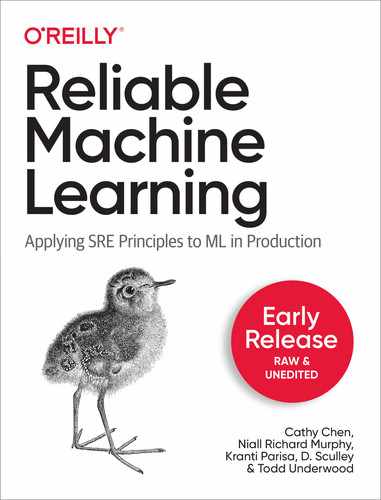Whether you're part of a small startup or a planet-spanning megacorp, this practical book shows data scientists, SREs, and business owners how to run ML reliably, effectively, and accountably within your organization. You'll gain insight into everything from how to do model monitoring in production to how to run a well-tuned model development team in a product organization. By applying an SRE mindset to machine learning, authors and engineering professionals Cathy Chen, Kranti Parisa, Niall Richard Murphy, D. Sculley, Todd Underwood, and featured guests show you how to run an efficient ML system. Whether you want to increase revenue, optimize decision-making, solve problems, or understand and influence customer behavior, you'll learn how to perform day-to-day ML tasks while keeping the bigger picture in mind. You'll examine:
Table of Contents
- Prospective Table of Contents (Subject to Change)
- 1. What Production Engineers Need to Know About Models
- What is a model?
- A Basic Model Creation Workflow
- Model Architecture vs. Configured Model vs. Trained Model
- Where Are the Vulnerabilities?
- Training Data
- Labels
- Training Methods
- Infrastructure and Pipelines
- Platforms
- Feature Generation
- Upgrades and Fixes
- A Set of Useful Questions to Ask about Any Model
- An Example ML System
- Yarn Product Click Prediction Model
- Features
- Labels for Features
- Model Updating
- Model Serving
- Common Failures
- Beyond the Basics
- 2. Incident Response
- Incident Management Basics
- Life of an Incident
- Incident Response Roles
- Anatomy of an ML-centric Outage
- Terminology Reminder: “Model”
- Story Time
- Story 1: Searching But Not Finding
- Story 2: Suddenly Useless Partners
- Story 3: Recommend You Find New Suppliers
- Stages of ML Incident Response for Story 3
- ML Incident Management Principles
- Guiding Principles
- Model Developer or Data Scientist
- Software Engineer
- ML SRE or Production Engineer
- Product Manager or Business Leader
- Special Topics
- Production Engineers and ML Engineering vs Modeling
- The Ethical On-Call Engineer Manifesto
- Conclusion
